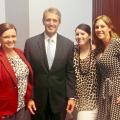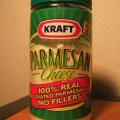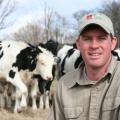The majority of U.S. dairy farmer cooperatives and dairy processing companies, all of which are members of the National Milk Producers Federation (NMPF) or the U.S. Dairy Export Council (USDEC), today threatened to withdraw support from the pending Trans-Pacific trade agreement if Japan and Canada refuse to follow through on pledges to provide comprehensive market access for U.S. dairy products.
Their letter can be found here.NMPF and USDEC initiated this united dairy industry message intended to underscore the need for comprehensive market access in all dairy tariff lines with both nations in order to ensure that TPP negotiations result in a high standard trade agreement that can be held up as a model for future agreements.
“USDEC has been one of the most vocal champions of the importance of including Japan and Canada in TPP since these markets offer strong opportunities for our members to expand U.S. dairy exports,” stated Tom Suber, President of USDEC. “However, it is critical that their participation in TPP be meaningful and comprehensive across all dairy products. It is entirely unacceptable to have such sizable, sophisticated economies refusing to undertake the necessary openness that they agreed to upon entering TPP.”
Jim Mulhern, president and CEO of NMPF noted that, “As we have made clear in our letter to Ambassador Froman and Secretary Vilsack, we want to see very strong outcomes on market access with Japan and Canada, and our industry remains prepared to match the level of ambition of those countries. To be successful, any eventual TPP agreement must result in more open dairy markets in Japan and Canada.”
In addition to urging U.S. negotiators to remain focused on opening up the Japanese and Canadian dairy markets, members of both organizations also stressed the importance of addressing the lingering impacts of New Zealand government dairy policies that have intentionally advantaged a single national champion at the expense of other competitors.
NMPF and USDEC members expressed strong hopes that TPP negotiations will result in a final package that can garner the endorsement of the U.S. dairy industry without requiring a re-examination of the industry’s support for Trade Promotion Authority as a critical tool in the approval of well-negotiated trade agreements.
###
TEXT OF NMPF AND USDEC LETTER TO USDA AND USTR
June 3, 2014
Ambassador Michael Froman
United States Trade Representative
600 17th Street, NW
Washington, DC 20508
Secretary Thomas Vilsack
U.S. Department of Agriculture
1400 Independence Ave., SW
Washington, DC 20250
Dear Ambassador Froman and Secretary Vilsack:
The undersigned dairy cooperatives and proprietary processors greatly appreciate the intensive efforts undertaken by Administration officials and you personally to obtain commitments from Japan and Canada on market access commensurate with the ambitious trade goals embraced by the charter members of the Trans‐Pacific Partnership (TPP).
It is clear, however, that Japan, as well as Canada, continues to strongly resist living up to the ambitious trade goals it obligated itself to undertake upon joining TPP negotiations. The U.S. dairy industry has been a leading and long‐standing advocate for comprehensive market access and the inclusion of Japan and Canada in TPP. Yet, we have held realistic expectations and recognize that the perfect should not be the enemy of the good. However, as reported in the media, Japan’s recent comments on market access progress show appallingly little substantive movement, and come nowhere close to our expectations. Canada will likely try to base its decisions on dairy market access off of what Japan commits to do for its most sensitive agricultural sectors, thus heightening the importance of achieving meaningful dairy market access to Japan.
We urge you to insist that TPP must remain a high standard trade agreement that can be used as a model for future U.S. free trade agreements. All TPP countries must do their part to ensure this undertaking lives up to its founding goals of comprehensive and meaningful market access. We are prepared to match the level of ambition of those countries, and urge you to press both to provide a very strong dairy package. Our industry must not provide any new access in this agreement that has not been given by Japan and Canada.
In addition, it is vital that TPP address serious non‐tariff policies by the New Zealand government that have uniquely advantaged the largest dairy exporting company in both the TPP region and the world. Tariffs are a critical component of this agreement, but not the only element.
It remains our hope that TPP negotiations with Japan and Canada can be concluded in a manner that will allow for strong support across our industry. However, our support for TPP is not unconditional. The elements cited here, which largely remain unresolved, must be concluded in a positive manner or our industry will find it difficult to support the final agreement. Similarly, our industry has been a strong supporter of Trade Promotion Authority (TPA) and would expect to continue to support it in the future. However, should Japan and Canada not commit to minimum standards and basic market‐based principles as many other TPP countries have done, we would need to re‐examine our support for TPA.
We stand ready to assist in delivering an agreement with market access provisions that we can support. Thank you, again, for the continuing efforts of you and your team.
Sincerely,
Agri-Mark
Methuen, Massachusetts
Arthur Schuman Inc.
Fairfield, New Jersey
Associated Milk Producers Inc.
New Ulm, Minnesota
BelGioioso Cheese Inc.
Denmark, Wisconsin
Bongards’ Creameries
Norwood Young America, Minnesota
Cayuga Milk Ingredients
Auburn, New York
Commercial Creamery Co.
Spokane, Washington
Continental Dairy Products, Inc.
Artesia, New Mexico
Cooperative Milk Producers Association’s
Blackstone, Virginia
Dairy Farmers of America, Inc.
Kansas City, Missouri
Davisco Foods International, Inc.
Le Sueur, Minnesota
Ellsworth Cooperative Creamery
Ellsworth, Wisconsin
FarmFirst Dairy Cooperative
Madison, Wisconsin
First District Association
Litchfield, Minnesota
Foremost Farms
Baraboo, Wisconsin
Glanbia Foods, Inc.
Twin Falls, Idaho
Great Lakes Cheese Company
Hiram, Ohio
High Desert Milk
Burley, Idaho
Hilmar Cheese Company Inc.
Hilmar, California
HP Hood LLC
Winchester, Virginia
Idaho Milk Products
Jerome, Idaho
International Ingredient Corporation
St. Louis, Missouri
J.M. Smucker Company
Orrville, Ohio
Land O’Lakes
Arden Hills, Minnesota
Leprino Foods Company
Denver, Colorado
Maryland & Virginia Milk Producers Cooperative
Reston, Virginia
MCT Dairies, Inc.
Millburn, New Jersey
Michigan Milk Producers Association
Novi, Michigan
Mid-West Dairymen’s Co.
Rockford, Illinois
Northwest Dairy Association/Darigold
Seattle, Washington
Proliant Dairy Ingredients
Melrose, Minnesota
Sartori Company
Plymouth, Wisconsin
Schreiber Foods, Inc.
Green Bay, Wisconsin
Scott Brothers Dairy / Chino Valley Dairy Products
Chino, California
Select Milk Producers
Artesia, New Mexico
St. Albans Cooperative Creamery, Inc.
St. Albans, Vermont
Swiss Valley Farms
Davenport, Iowa
United Dairymen of Arizona
Tempe, Arizona
Upstate Niagara Cooperative, Inc.
Buffalo, New York
NMPF’s Board of Directors met last week in Arlington, Virginia, for an update on several key issues of interest to dairy farmers and cooperatives, including the progress being made on implementing the new farm bill’s dairy safety net.
 Nearly 60 dairy farmers from dozens of states fanned out on Capitol Hill last week in conjunction with NMPF’s summer board of directors meeting and Young Cooperator grassroots lobbying session.
Nearly 60 dairy farmers from dozens of states fanned out on Capitol Hill last week in conjunction with NMPF’s summer board of directors meeting and Young Cooperator grassroots lobbying session. A bipartisan group of more than 175 House members has joined a majority of the U.S. Senate in urging the Obama administration to fight back against European Union efforts to keep U.S. dairy companies from using common cheese names like parmesan and feta both in export markets and in the United States.
A bipartisan group of more than 175 House members has joined a majority of the U.S. Senate in urging the Obama administration to fight back against European Union efforts to keep U.S. dairy companies from using common cheese names like parmesan and feta both in export markets and in the United States. Cooperatives Working Together helped member cooperatives sell another 14.2 million pounds of dairy products overseas in May. The voluntary, farmer-funded program will provide assistance on 53 overseas sales from seven different cooperatives: Dairy Farmers of America, Foremost Farms, Maryland & Virginia Milk Producers Association, Michigan Milk Producers Association, Northwest Dairy Association (Darigold), Tillamook County Creamery Association and Upstate-O-AT-KA. The products included 7.1 million pounds of American-type cheese, 4.2 million pounds of butter, and 3 million pounds of whole milk powder. All will be delivered before the end of the year.
Cooperatives Working Together helped member cooperatives sell another 14.2 million pounds of dairy products overseas in May. The voluntary, farmer-funded program will provide assistance on 53 overseas sales from seven different cooperatives: Dairy Farmers of America, Foremost Farms, Maryland & Virginia Milk Producers Association, Michigan Milk Producers Association, Northwest Dairy Association (Darigold), Tillamook County Creamery Association and Upstate-O-AT-KA. The products included 7.1 million pounds of American-type cheese, 4.2 million pounds of butter, and 3 million pounds of whole milk powder. All will be delivered before the end of the year.





